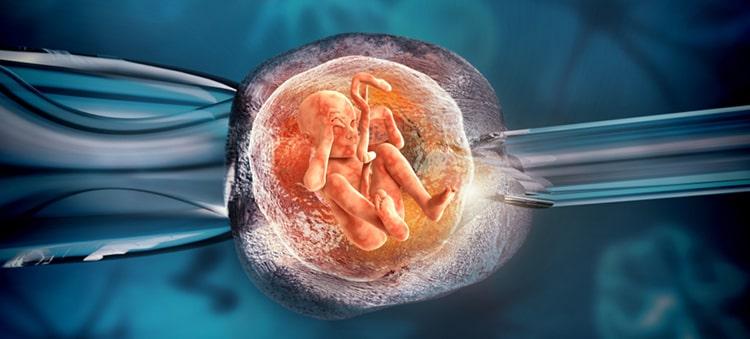Understanding Stand Alone Power: Step-by-Step Guide
Recently, interest in independent power systems, known as stand-alone power systems, has grown significantly. These systems provide a reliable energy source by generating, storing, and distributing electricity without depending on a centralised power grid. Stand Alone Power is particularly beneficial for remote areas and individuals seeking energy independence. By utilising renewable energy sources such as solar, wind, or hydropower, these systems can reduce reliance on fossil fuels and enhance energy security, despite the initial costs and need for regular maintenance.
Grasping Stand-Alone Power Systems
A stand-alone power system typically consists of several critical components: a power generation source, battery storage, an inverter, and a control system. These elements work together to produce, store, and manage electricity efficiently.
Power Generation Source
Solar panels, wind turbines, or hydroelectric systems are the primary generation sources in stand-alone power systems. Solar panels capture sunlight and convert it into electricity, while wind turbines harness wind energy, and hydroelectric systems utilise flowing water to generate power. Each source provides renewable energy, reducing reliance on fossil fuels and promoting environmental sustainability.
Battery Storage
Batteries store the generated energy for later use, ensuring a consistent power supply even when the generation source is not active (e.g., at night for solar panels or during calm weather for wind turbines). Lithium-ion batteries are commonly used for their high energy density, efficiency, and long lifespan.
Inverter
The inverter plays a crucial role by converting the direct current (DC) stored in the batteries into alternating current (AC), the standard form of electricity used in households and industrial applications. This conversion allows the stored energy to be utilised effectively for various electrical needs.
Control System
Control systems ensure efficient operation and safety of the power system. They monitor and manage the flow of electricity, regulate voltage levels, and protect against issues such as overcharging, discharging, and short circuits. Advanced control systems can also provide real-time data and remote monitoring capabilities.
Although stand-alone power systems offer significant benefits, such as reduced reliance on fossil fuels and greater energy security, they also require a substantial initial investment and ongoing maintenance to remain effective. Proper installation, regular maintenance, and periodic system checks are essential to ensure optimal performance and longevity.
Varieties of Stand Alone Power Systems
Stand Alone Power Systems use photovoltaic panels to convert sunlight into electricity, making them ideal for sunny locations with minimal upkeep. Wind power systems harness wind energy through turbines, making them best suited for regions with consistent wind patterns. Hydropower systems generate electricity from flowing water, making them effective for areas near rivers or streams.
Planning an Stand-alone Power Supply
When planning an Stand-alone power supply, it is essential to accurately assess your energy consumption to determine the system size required. Conduct a site analysis to evaluate factors such as sunlight exposure for solar systems, wind patterns for wind power, or proximity to water sources for hydropower. Additionally, potential obstacles that may affect energy generation, like shading for solar panels or wind barriers, should be considered. Ensure proper space allocation for all components, including batteries and inverters. Lastly, consider future energy needs and potential expansion when designing your system to avoid costly modifications later.
Designing an Autonomous Power System
Selecting the appropriate components is crucial for an effective autonomous power system. Opt for generation sources like solar panels, wind turbines, or hydropower that best suit your location and energy needs. Batteries should be chosen for storage capacity and efficiency, ensuring they meet your consumption demands. Inverters are essential to convert stored energy into usable electricity. Considering current and future energy requirements, proper system sizing and configuration are necessary for optimal performance. Your autonomous power system can provide a reliable and sustainable energy solution by carefully planning and choosing the right elements.
Installation Procedure
The installation starts with site preparation, including clearing land or erecting supports as needed. Carefully follow the manufacturer’s guidelines for installing each component, such as mounting solar panels, setting up wind turbines, or positioning hydro systems. Ensure all electrical connections are secure and conform to local regulations. Position batteries in a cool, dry location to maximise efficiency and longevity. Install the inverter close to the battery bank to reduce energy loss. Finally, the control system will be set up to manage energy flow and monitor performance. Consult professionals if necessary to ensure compliance with safety standards and optimal system operation.
Maintenance and Care of Stand Alone Power Supply
Regular maintenance is essential to ensure the longevity of your Stand Alone Power Supply. This includes routine cleaning of solar panels to maximise energy absorption and periodic checks of battery health to prevent capacity loss.
Inspect inverters and wiring for any signs of wear or damage. It’s crucial to monitor the control system to detect and address any operational anomalies promptly. Scheduling professional inspections can help maintain system efficiency and safety. Keeping detailed maintenance records aids in tracking performance over time and planning future upkeep.
Financial Considerations
When evaluating the financial implications of a stand-alone power system, it’s crucial to consider both the upfront costs and potential long-term savings. Initial investments cover components like solar panels, wind turbines, batteries, inverters, and installation fees.
However, these costs can be offset by reduced utility bills and potential government incentives or rebates to promote renewable energy adoption over time. Additionally, it’s essential to budget for ongoing maintenance to ensure the system operates efficiently. Financing options such as loans or leasing arrangements can also help manage the initial expenditure. Overall, understanding the comprehensive financial picture will aid in making an informed decision.
Environmental Effects
Stand-alone power systems mitigate environmental impact by utilising renewable energy sources, reducing emissions and conserving natural resources. These systems decrease reliance on non-renewable energy, contributing to biodiversity preservation and lessening pollution. They also encourage sustainable development practices, fostering a greener and more resilient ecosystem. Stand-alone power systems are crucial in combatting climate change and promoting environmental stewardship by supporting the transition from fossil fuels.
Real-World Examples
Successful implementations of stand-alone power systems can be seen worldwide. In rural Australia, isolated farms have adopted solar and wind power systems to reduce reliance on diesel generators. In Africa, several off-grid villages use solar microgrids, providing consistent electricity where the central grid is absent.
These examples highlight the adaptability of stand-alone systems to various geographical and environmental conditions. Community involvement in maintaining these systems has also been crucial. The practical insights underscore the importance of tailored solutions considering local resources and needs. Such real-world applications demonstrate the potential of stand-alone power systems to enhance energy accessibility and sustainability globally.
Innovations in Stand-alone Power
Emerging technologies are revolutionising Stand-alone power systems, with advanced energy storage solutions such as lithium-ion and flow batteries enhancing storage capacity and efficiency. Innovations in renewable energy sources, like bifacial solar panels and vertical axis wind turbines, are increasing energy capture even in less ideal conditions.
Smart grid technologies enable better energy management and real-time monitoring, ensuring optimal performance and reliability. Integrating AI and machine learning also helps predict energy production and consumption patterns, further optimising system efficiency. Research into alternative renewable sources, including tidal and geothermal energy, also promises to diversify and strengthen the capabilities of stand-alone power systems.
Regulations and Standards for Stand Alone Power Supply Systems
Ensuring your Stand Alone Power Supply Systems complies with local regulations and industry standards is vital for safety and efficiency. These guidelines often cover electrical safety, environmental impact, and performance criteria.
Adhering to these standards helps prevent accidents, protects the environment, and ensures the system operates reliably. Stay updated on any regulation changes, as these can affect both new installations and existing systems. Engaging with certified professionals for installation and inspections can also aid in meeting compliance requirements.
Community and Social Implications
Stand-alone power systems significantly enhance the quality of life in remote areas by providing reliable electricity and enabling access to essential services such as healthcare, education, and communication. This improved access can improve economic opportunities by supporting small businesses and local industries.
Additionally, adopting renewable energy sources within these systems promotes environmental awareness and responsibility among community members. Stand-alone systems also reduce dependence on imported fuels, fostering greater local autonomy and resilience. Enhanced energy access can improve social cohesion by supporting communal facilities and activities, strengthening community ties. Stand-alone power systems contribute to sustainable development and social progress in underserved regions.
Challenges and Solutions
Stand-alone power systems face issues like weather dependency, impacting solar and wind energy production. Hybrid systems, combining different energy sources, can mitigate these effects. Storage limitations are another challenge; advancements in battery technology, such as lithium-ion and flow batteries, help improve capacity and efficiency. Regular maintenance is crucial to ensure optimal performance and longevity. Technical complications, including system integration and management, can be addressed using smart grid technologies and predictive analytics. Ensuring compliance with local regulations and standards is essential to prevent operational disruptions and ensure safety.
Conclusion
Stand-alone power systems are becoming increasingly vital as they offer a viable alternative to traditional energy sources. With advancements in renewable energy technology and storage solutions, these systems are now more efficient and accessible. They provide a sustainable way to meet energy demands while reducing environmental impact. As more communities and individuals adopt these systems, they can achieve greater energy independence and resilience. The ongoing innovation and commitment to sustainability in this field promise a robust future for stand-alone power, making it a cornerstone of modern energy strategies.
FAQS
What is a Stand Alone Power system?
A stand-alone power system generates and supplies electricity independently of a centralised power grid
What are the main components of a stand-alone power system?
Key components include power generation sources, battery storage, an inverter, and a control system.
What are the benefits of stand-alone power systems?
Benefits include energy independence, reduced carbon footprint, and energy security.
Are stand-alone power systems expensive?
Initial costs can be high, but long-term savings and potential incentives can offset this.
How do stand-alone power systems impact the environment?
They reduce reliance on fossil fuels and promote sustainability, leading to a lower carbon footprint.
What are the common challenges of using stand-alone power systems?
Common challenges include weather dependency and the need for regular maintenance. Solutions involve diversifying energy sources and routine checks.
| Related Business Listings |
| Contact Directory |
| Local Business Profiles |





